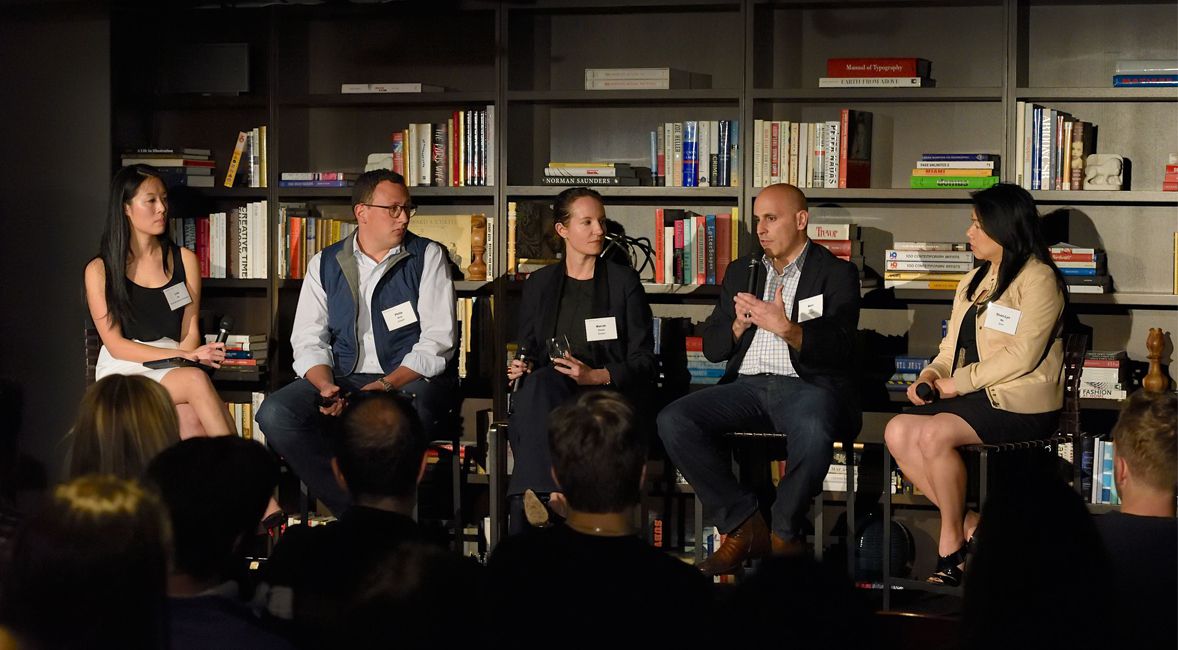New York’s Top Consumer Startups Share Insights Into Building an Enduring Brand Online
Online shopping is growing at an explosive pace. To better understand how companies can stand out from the competition in this large and exciting category, Norwest invited entrepreneurs building consumer brands to join in the latest installment of our Norwest Founder Series.
The panel discussion featured Marc Lore, founder and CEO of Jet, and Philip Krim, co-founder and CEO of Casper, both of which are backed by Norwest. They were joined by Mariah Chase, CEO of Eloquii and Shan-Lyn Ma, co-founder and CEO of Zola, as they all shared their stories about the trials, successes and opportunities that have come with building and launching their brands.
With more than 100 brand-focused, consumer entrepreneurs in attendance in the Library at NeueHouse Madison Square, we sat down for an in-depth discussion on what it takes to build and maintain a successful consumer brand online. Norwest Managing Partner Jeff Crowe and Vice President Lisa Wu moderated the session.
Here are some key takeaways from our discussion.
A Strong Brand Builds an Emotional Connection
When building a strong brand there is ultimately one commonality: the emotional connection forged between the company and its customers.
As Marc Lore pointed out, a brand is more than metrics—you can’t measure all the small touch points that create the emotional experience between the company and the customer. You have to be prepared to make decisions and invest in the long-term, even though it might not pencil out economically in the short-term.
Gauging the clout of a brand is still, however, possible. “A simple way to test how powerful your brand is to raise the price and see what happens to demand,” Marc said. “If you’ve created a magical brand, there’s a lot less price elasticity. If you don’t really have a brand, people will be more price-sensitive. It’s more commodity-driven.”
Similarly, Mariah Chase describes Eloquii’s brand as one that represents a “joint mission” between the company and its customers. Together they are working to break fashion stereotypes about size and open a new market.
Philip Krim noted how Casper’s subway advertising has gone beyond his expectations in connecting with consumers. Passengers are usually barely awake on their way to work or tired on their way home, making them the perfect target demographic for Casper’s message of sound sleep and comfort. The playful ads bring a smile to the tired riders and create a lasting memory. Today, Casper continues to look for opportunities to connect with a captive audience in a genuine and coherent way that fosters a lasting connection.
Rich Offline Brand Experiences Help Drive Online Engagement
Diversifying from online into offline allows retailers to deliberately craft an experience that combines all platforms that a consumer might use, regardless of whether it is digital or physical.
Casper is agnostic to the experiences they drive online or offline. As Philip points out, “We think they are accretive. With mattresses, it’s a highly considered purchase so it’s generally something that’s happening over multiple interactions with our brand. Consumers don’t care if their interactions come digitally or offline. They just want those connections to be rich, rewarding and connecting.” Casper primarily sells online, but for those seeking an in-person experience, there is the opportunity to have it in Casper’s showroom in New York’s SoHo district.
Shan-Lyn Ma has also seen success for Zola with a pop-up shop in SoHo. “It’s so much easier to build a brand offline than online because you can guide the customer through where you want them to walk, what you want them to see; online they do what they want,” explains Shan-Lyn Ma. Staged like a beautiful home, the Zola Townhouse is a shoppable abode that allows couples to walk through, touch and feel products and visualize their future lives together. The immersive and interactive experience creates a strong connection between Zola, its customers and the products that they love.
Maintain the Culture While Scaling the Business
How to grow is always on a company’s mind, but maintaining a company’s culture during growth is just as important.
There is a distinctive challenge in keeping the bar high and keeping people motivated, especially as the layers between leadership and the ground floor grow.
“In the early days, everyone is interviewed by a founder,” Philip explained. “As the company gets bigger, you need to institutionalize the process because there’s less time to connect with everyone.”
For Marc, this meant building Jet’s foundation early around core values—with a key first cohort of employees that would carry the torch forward. Marc also encouraged those in attendance to consider a potential hire’s cultural fit before considering their resume, explaining that it is too important to be compromised.
The Hard Stuff is Where the Growth Is
Our guests also shared advice they would give themselves back when they first got their start.
Mariah spoke on the value that can be obtained from hard times. “Make all the mistakes. Go through all the hard stuff. The hard stuff is where the growth is.”
Shan-Lyn touched on the benefits that come with recognizing that your network is the people whom you deal with every day—and it can serve you well to tap on those people down the road for recruiting, advice and other opportunities. Embrace the mindset that every meeting is a business meeting.
In all, while there isn’t a single recipe for building an enduring brand, at the core is a feeling that founders convey to employees and employees convey to consumers. Don’t shy away from the hardships that may come from starting from the ground up. Dive right into creating emotional and memorable moments that will imprint your brand in customer and employees’ minds for the long run.
A highlight reel from the event may be viewed below.


